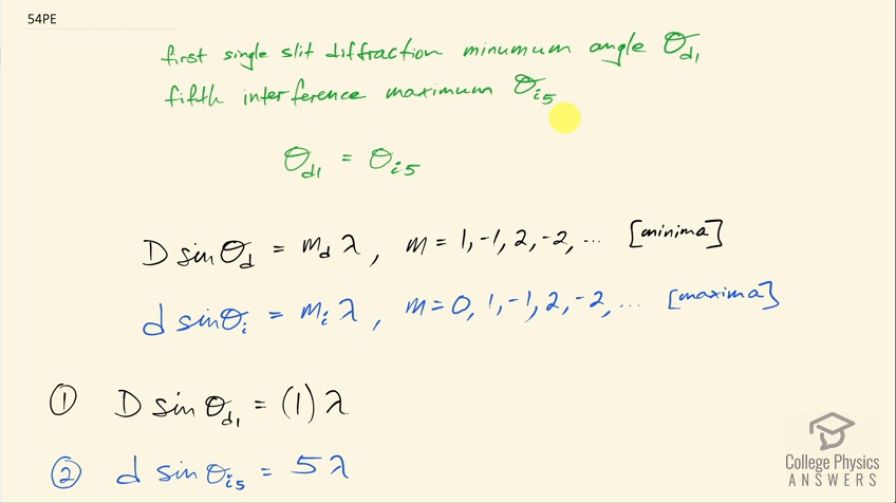Question
A double slit produces a diffraction pattern that is a combination of single and double slit interference. Find the ratio of the width of the slits to the separation between them, if the first minimum of the single slit pattern falls on the fifth maximum of the double slit pattern. (This will greatly reduce the intensity of the fifth maximum.)
Final Answer
Solution video
OpenStax College Physics for AP® Courses, Chapter 27, Problem 54 (Problems & Exercises)

vote with a rating of
votes with an average rating of
.
Video Transcript
This is College Physics Answers with Shaun Dychko. In this question, we have a double slit and we are recognizing that there are two patterns being superimposed upon each other one is the interference pattern due to the double slit and those are interference maxima and we have a formula for that that's little d, which is the distance between the two slits times sin of the angle to that interference maximum and that equals the order of the interference maximum times the wavelength. So that's the pattern for the maxima and then superimpose on top of that, we have this diffraction pattern of minima where we have the width of one of the slits times sin of the angle to the diffraction minimum equals the order of the diffraction minimum times the wavelength. So I have d as a subscript here to label things to do with the diffraction minima and I have letter subscript i to label things to do with the interference maxima. Okay! So we are told that the fifth maximum is going to be in the same position as the first diffraction minimum and so I have m d is 1 and < i>m i is 5 and we are also told that these angles are the same the angle to the first diffraction minimum is the same as the angle to the fifth interference maximum. Well with that being the case that means sin of Θ d 1 equals sin Θ i 5 and let's just call it x and you can call it anything you like but let's just call it something so that we can see they are the same. And now if we take equation (1) and divide it by equation (2), we get D times x replacing sin Θ d 1 with x here divided by little d times x equals the right-hand side λ divided by 5λ and so the x's cancel and so do the λ's and we have the slit width— the width of a single slit— divided by the distance between the slits equals one-fifth. So the slit width should be one-fifth the distance between the slits.